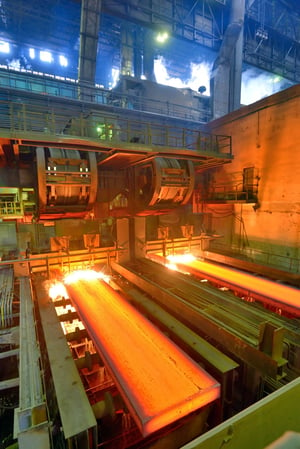 If your manufacturing process involves extremely high temperatures, odds are that you’ve heard of Inconel before. This high nickel alloy is extremely resistant to oxidation, corrosion, and scaling in high-temperature environments, and will maintain its tensile strength at temperatures that would cause plain steel to become pliable.
If your manufacturing process involves extremely high temperatures, odds are that you’ve heard of Inconel before. This high nickel alloy is extremely resistant to oxidation, corrosion, and scaling in high-temperature environments, and will maintain its tensile strength at temperatures that would cause plain steel to become pliable.
Inconel also has a high tolerance for pressure. Combined with its extreme temperature tolerance, this makes Inconel perfect for a variety of punishing operating environments. Uses for Inconel include:
- Nuclear Power Plant Reactors
- Firearm Sound Suppressor Baffles
- Rocket Engine Thrust Chambers
- Heat Treatment Baskets
- Marine Equipment
However, the toughness that makes Inconel such a valuable material for high-intensity applications also makes it incredibly tough to work with.
It’s not unheard of for cutting and shaping tools to be broken or deformed when used to shape Inconel. In other cases, the Inconel’s outer layer may harden too quickly in response to machining, resulting in an imperfect shape for the Inconel.
To properly shape and work with Inconel takes an understanding of its properties and how to compensate for its limitations. With this in mind, here are a few Inconel machining tips you need to know:
Tip #1: Regularly Check Tooling for Signs of Wear
Tooling can only last for so long when used on materials as tough as Inconel. Even super-tough tooling will be blunted by the sheer surface hardness of Inconel. When Inconel is work-hardened, tooling can wear out as heat and pressure builds.
Carefully inspecting tooling is critical for maximizing quality in Inconel machining.
Tip #2: Start with a Solutionized Piece of Metal
Cold-drawing metal hardens the work surface. This makes Inconel even harder to work, causing more stress to tooling. Stress-relieving metal prior to working can help reduce surface hardness.
Starting with a solutionized piece of Inconel is optimal because it helps to limit the amount of work hardening. This reduces the wear and tear placed on machining tools.
Tip #3: Use Ceramic Cutting Tools for Continuous Cuts
Being able to make a fast, continuous cut is important for minimizing the risk of work hardening mid-process. As such, specialists in the manufacture of high-nickel alloys recommend using cutting tools made from ceramic materials for long, uninterrupted cuts.
Tip #4: Avoid Pecking When Drilling Inconel
Pecking (repeated motions) while drilling Inconel can cause work hardening and place extra wear and tear on tools. This is because as the repeated pecks hit the Inconel can cause dislocations in the microstructure of the material.
Such dislocations cause the material to become compacted at the microscopic level—making the surface harder.
These are just a few of the tips manufacturers have to keep in mind when working with high-nickel alloys such as Inconel. For more help and advice, talk to an experienced manufacturing engineer today!
Related Articles:
4 Examples of Uses for Inconel and Why to Use it
Characteristics of Inconel 625 and Common Steel Alloys Under High Heat



.gif)


